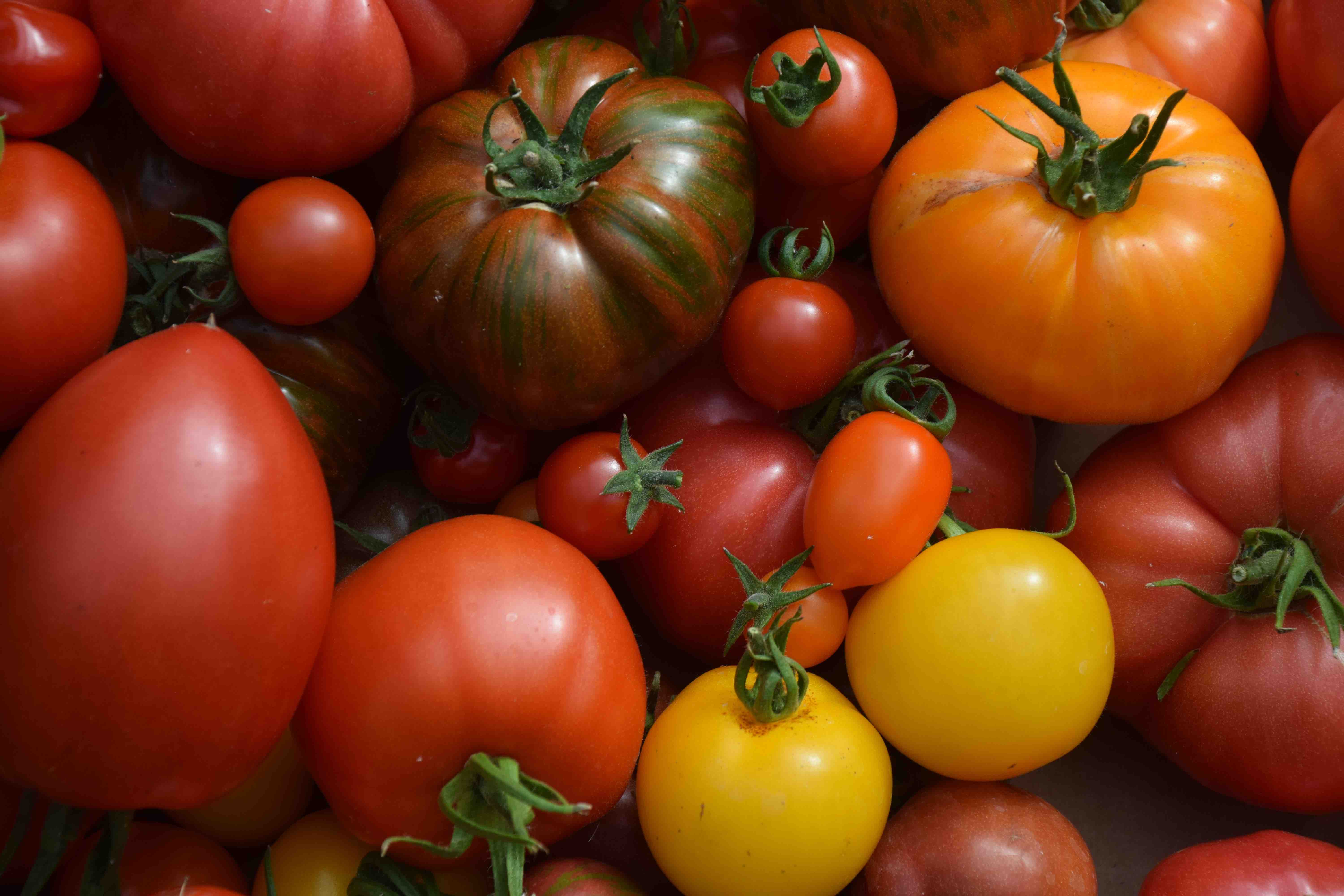
If you started your tomatoes in spring then it should not be long before you will be picking your first ripe tomatoes, especially if you are growing them in a greenhouse or polytunnel. I covered the basics in spring and it may be useful to have a quick look at that .
But the year has moved on and there are things we should be doing now to keep your plants healthy and productive.
The main jobs are;
- Watering
- Feeding
- Training
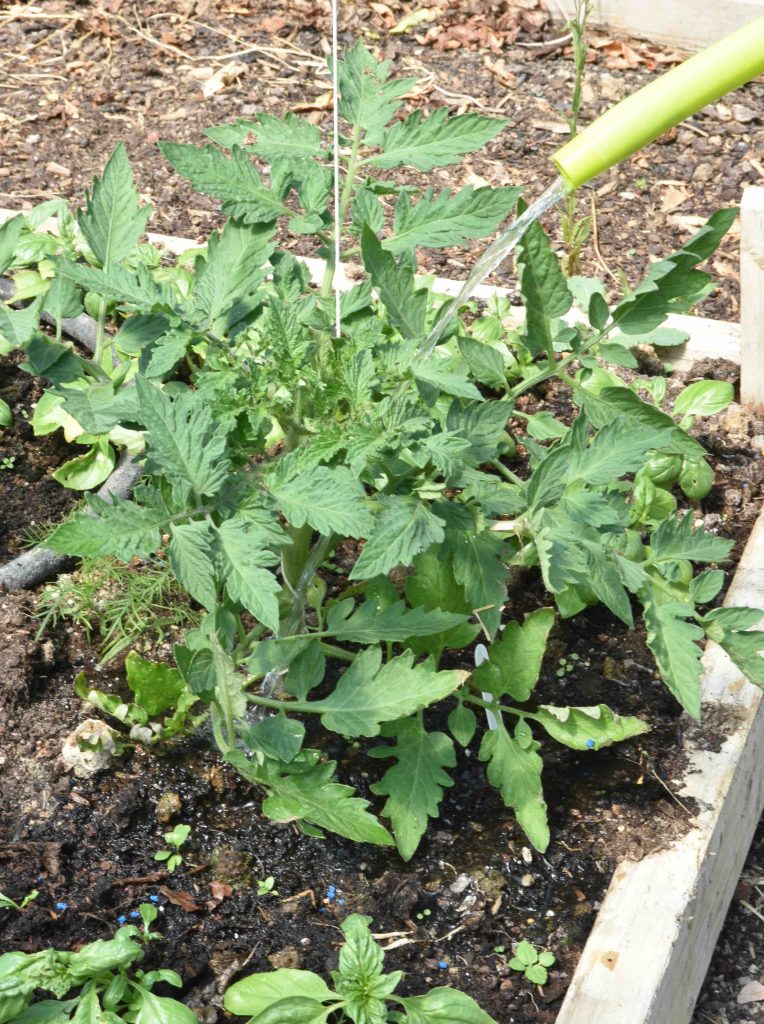
Watering is very important and must not be neglected. If you are growing in beds or the soil then it is unlikely that the plants will dry out completely if you skip a day’s watering but if they are in containers then they will need watering every day and this will increase as the plants get bigger. And as they start to crop, while continuing to grow, watering becomes even more important.
If the plants are allowed to dry out at any time, to the point where the leaves start to wilt, there will be problems. If the plants wilt there is a chance that the flowers may drop off without forming fruits. Just as importantly, any small fruits that have formed will be damaged and will develop ‘blossom-end rot’. This is where the ends of the fruits become sunken and black. It is very rare for well-watered plants to suffer from this unless they are very short of calcium so if you find fruits with black ends then they must have dried out at some stage. Keeping the plants moist is essential but can be a problem if you have three plants per growing bag which is why I always prefer to plant just two per bag and have two healthy plants rather than three that struggle.
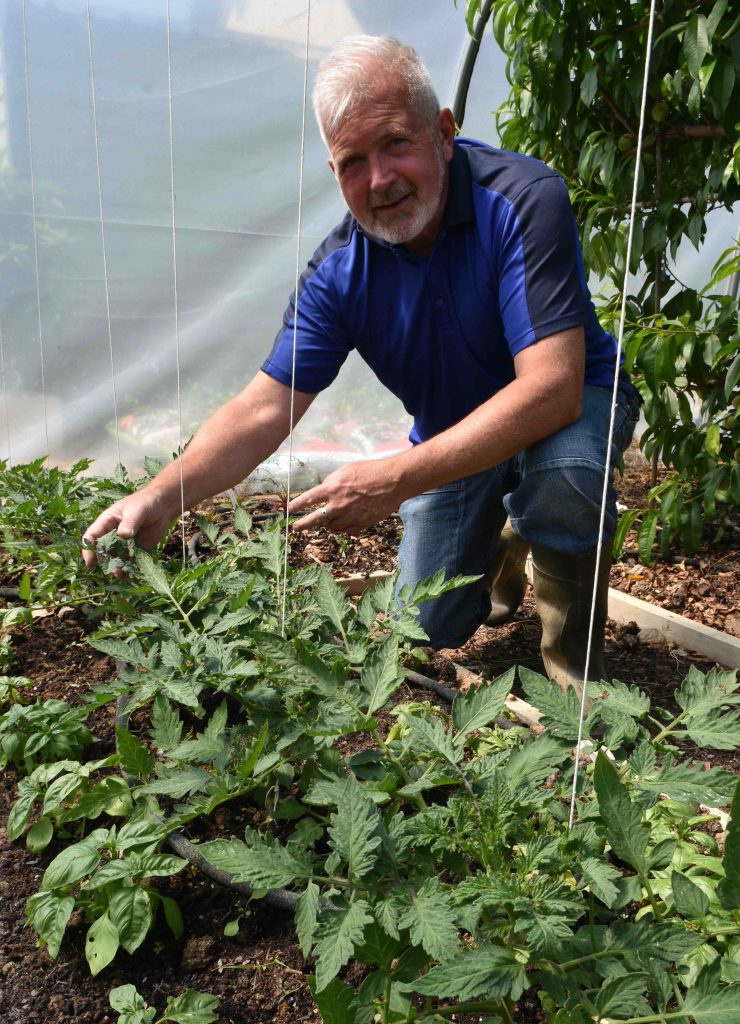
Feeding
If you want productive plants and lots of fruits then feeding is essential. The simplest way to feed is with a liquid fertiliser. Buy a tomato feed and apply it at least once a week to plants in pots and growing bags. If they are growing in the soil then you can feed your plants by scattering fertiliser around the plants once every six weeks. Use a good quality general fertiliser such as chicken pellets or fish, blood and bone. You can also water in a liquid fertiliser.
Tomato fertiliser is useful to have because you can use it for any flowering plant in pots on the patio, and hanging baskets. Always apply it to damp compost. If your plants are dry then water first and then apply the fertiliser.
As the plants get bigger and carry more fruits, feed more often. I tend to dilute the fertiliser to half strength and apply it two or three times a week from August onwards. This is fine but never mix up the fertiliser stronger than on the pack – it might cause root damage if applied to dry compost.
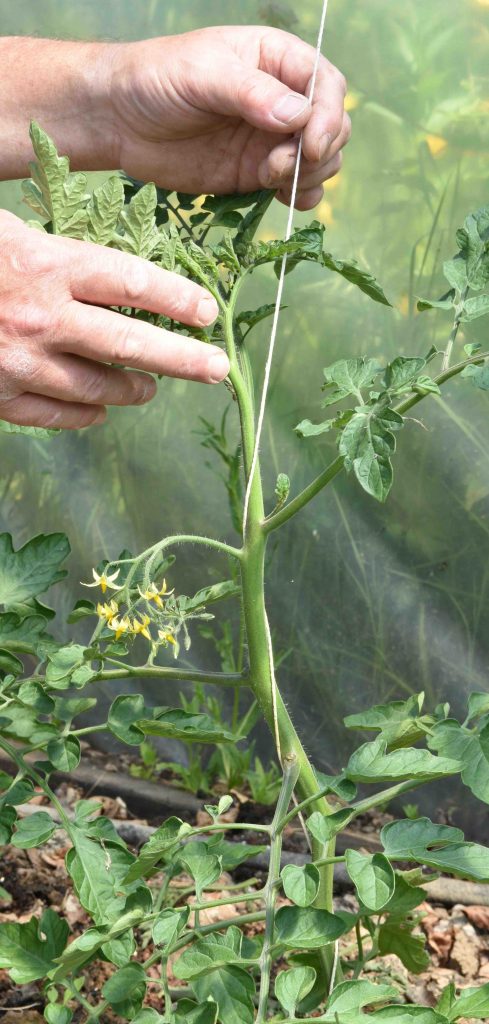
Training
Most tomatoes are ‘cordon’ tomatoes, meaning that they are grown as a single stem. These need support. You can tie them to canes but I grow my plants in the polytunnel so can use overhead bars to support strings. I tie these to the base of the plant and then simply have to twist the plants round the strings as they grow. Not only is this a quick and effective way to support them it also saves time in autumn when I can just pull up the plants and compost the plants and the string.
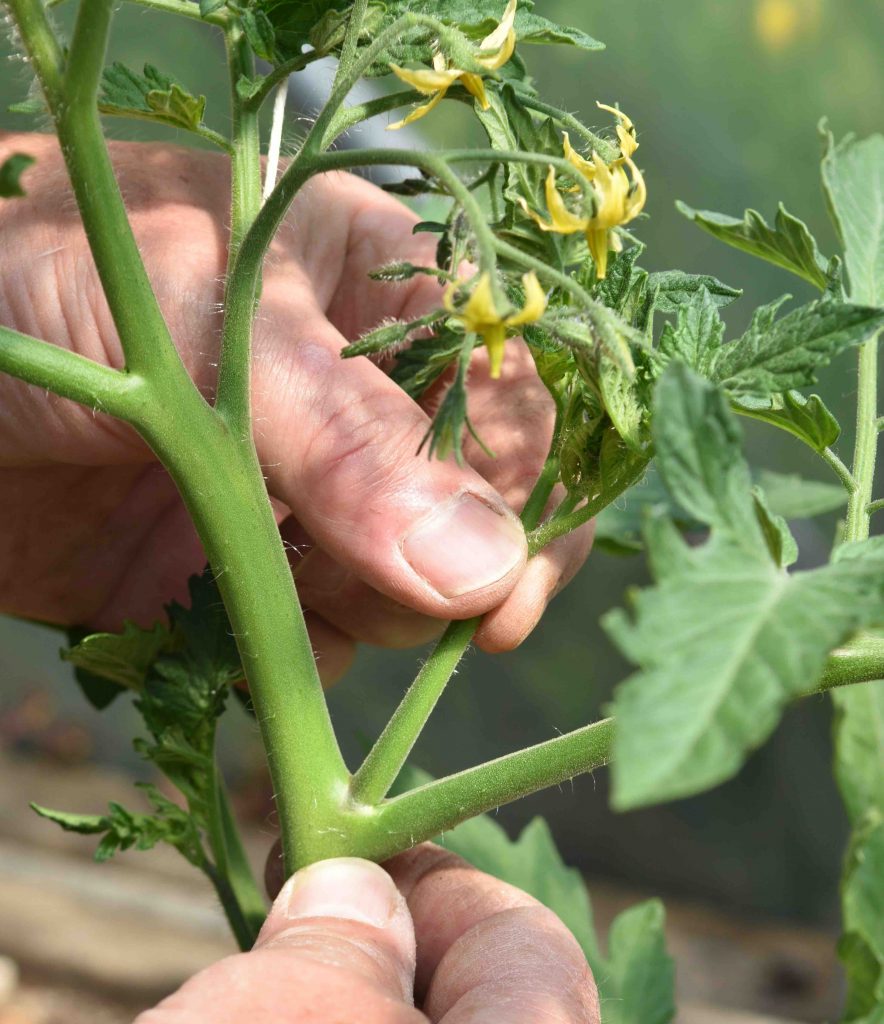
It is important to keep cordon tomatoes under control. Where the leaves are attached to the stems, new sideshoots will grow and these must be removed. If allowed to grow the plants become a tangled mess of stems and you will only get small fruits. Snap or cut them off as soon as possible.
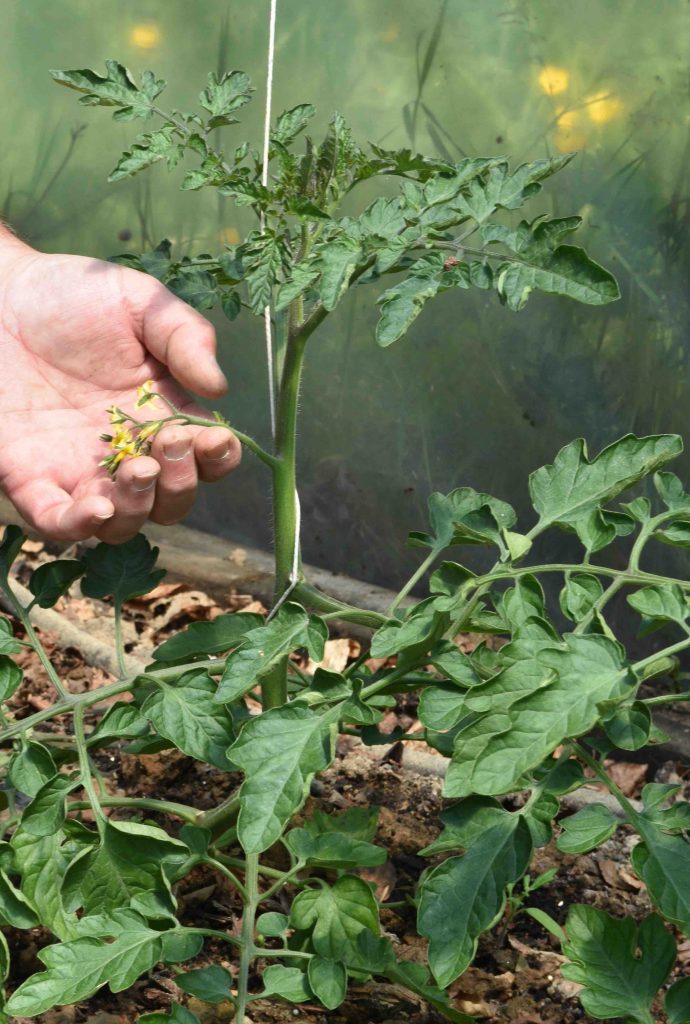
Flowers, which will become fruits, grow directly from the stems and NOT where the leaf is attached to the stem. Tomatoes are self-fertile but can be encouraged to ‘set’ if plants are sprayed with water or the flowers are tapped daily to dislodge the pollen. Otherwise bumblebees will do the job!
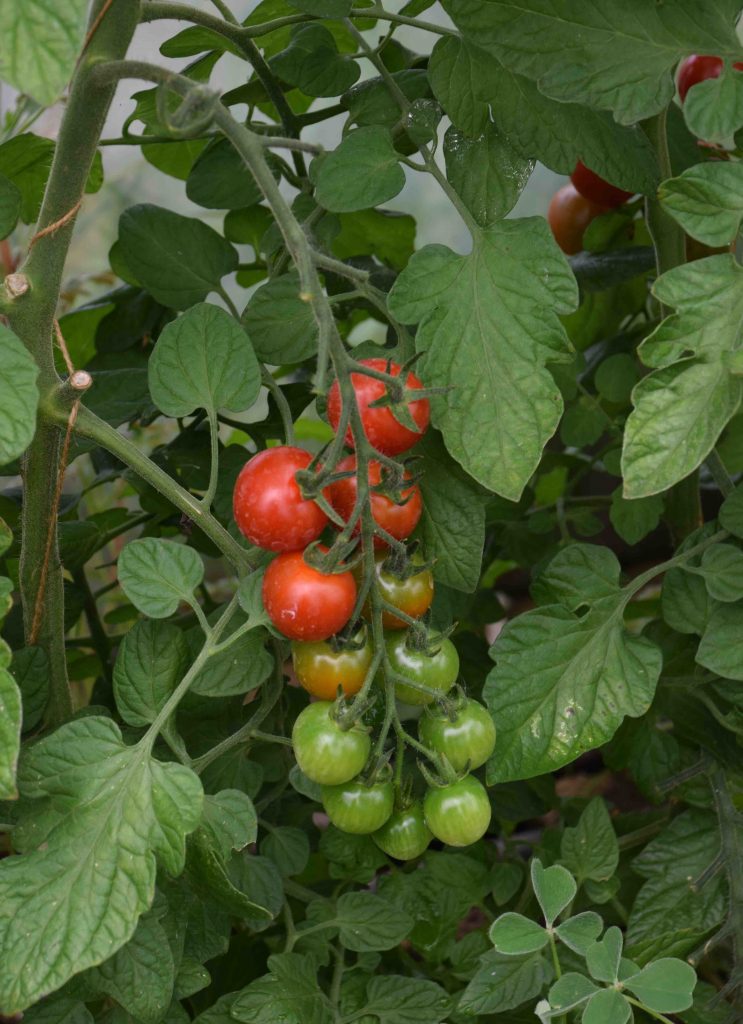
It can be frustrating, waiting for the first fruits to ripen but it will happen and once they start you will have plenty. It is warmth and not direct sunlight that ripens the fruits so do not be tempted to pull off the lower leaves to expose the fruits to sun – that can lead to other problems and the leaves, if green, are needed by the plant.
If the fruits are exposed to sun the skins can become tough – also caused by dryness.